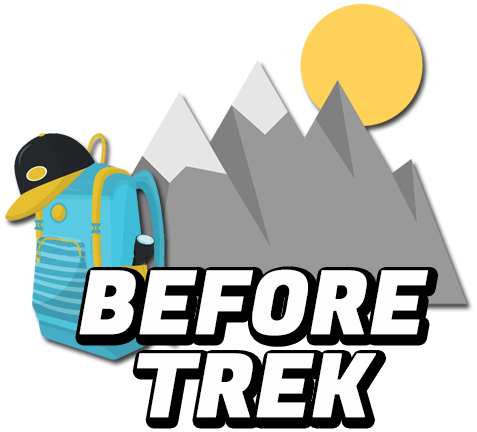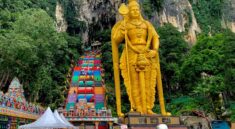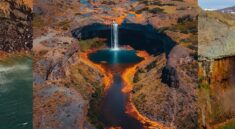Patagonia, a vast region spanning the southernmost tip of South America, captivates adventurers and nature enthusiasts with its awe-inspiring landscapes and rugged beauty. Stretching across Argentina and Chile, Patagonia encompasses diverse terrain, from towering Andean peaks to icy glaciers and windswept plains.
One of the most iconic features of Patagonia is its stunning national parks, including Torres del Paine and Los Glaciares. These protected areas offer unparalleled opportunities for hiking, trekking, and wildlife spotting amidst breathtaking scenery. Visitors can marvel at towering granite peaks, shimmering glacial lakes, and vast expanses of pristine wilderness.
Patagonia is also home to some of the world’s most impressive glaciers, including the renowned Perito Moreno Glacier. Witnessing these colossal ice formations calving into the turquoise waters below is a truly unforgettable experience.
Beyond its natural wonders, Patagonia boasts a rich cultural heritage shaped by indigenous peoples and European settlers. Travelers can immerse themselves in local traditions, sample traditional cuisine, and learn about the region’s fascinating history at museums and cultural centers.
Whether embarking on a multi-day trek through remote wilderness or simply soaking in the breathtaking vistas, Patagonia offers endless opportunities for adventure and exploration in one of the world’s last remaining wilderness frontiers.
how to get to Patagonia South America
Getting to Patagonia depends on which part of the region you plan to visit, as it spans across both Argentina and Chile. Here are some common ways to reach different areas of Patagonia:
- Fly to Major Airports: Patagonia has several airports with regular domestic and international flights. The most common entry points are:
- In Argentina: Buenos Aires (Ezeiza International Airport or Aeroparque Jorge Newbery) and El Calafate (Comandante Armando Tola International Airport).
- In Chile: Santiago (Arturo Merino Benitez International Airport) and Punta Arenas (Presidente Carlos Ibáñez del Campo International Airport).
- Travel by Land: If you’re already in Argentina or Chile, you can reach Patagonia by bus or car. Long-distance buses operate between major cities and towns in both countries, offering routes to popular destinations in Patagonia. Road trips are also a popular option for those seeking to explore the region’s scenic landscapes at their own pace.
- Take a Cruise: Another way to reach certain parts of Patagonia, particularly in the southernmost regions, is by taking a cruise. Cruise ships often visit destinations such as Ushuaia in Argentina or Punta Arenas in Chile, providing access to the stunning fjords, glaciers, and wildlife of the region.
- Combine with Other Destinations: Many travelers to Patagonia combine their visit with other destinations in Argentina or Chile. For example, you can fly into Santiago or Buenos Aires and then take a connecting flight or bus to Patagonia. Alternatively, you can incorporate Patagonia into a broader itinerary that includes other regions or attractions in South America.
- Hiking Trails: If you’re planning to embark on a trekking adventure in Patagonia, such as in Torres del Paine National Park or Los Glaciares National Park, you’ll typically need to access the trailheads by bus or private transportation from nearby towns or cities.
Before traveling to Patagonia, it’s essential to research transportation options, including flight schedules, bus routes, and road conditions, to ensure a smooth and enjoyable journey to this remote and captivating region.
Things to do at Patagonia South America
Patagonia offers a wealth of outdoor adventures and cultural experiences for travelers to enjoy. Here are some top things to do in this breathtaking region:
- Trekking and Hiking: Explore Patagonia’s stunning landscapes on foot by embarking on a trekking or hiking adventure. Popular routes include the W Trek in Torres del Paine National Park (Chile), the Laguna de los Tres Trail in Los Glaciares National Park (Argentina), and the Huemul Circuit near El Chaltén (Argentina).
- Glacier Watching: Witness the awe-inspiring beauty of massive glaciers in Patagonia. Visit the Perito Moreno Glacier near El Calafate (Argentina) to see its dramatic ice walls calving into Lake Argentino. In Chile, explore the Grey Glacier in Torres del Paine National Park or take a boat tour to see the Serrano and Balmaceda glaciers in Bernardo O’Higgins National Park.
- Wildlife Viewing: Patagonia is home to a diverse array of wildlife, including guanacos, foxes, pumas, and Andean condors. Take guided wildlife-watching tours or explore nature reserves such as Punta Tombo (Argentina) to observe Magellanic penguins in their natural habitat.
- Boat Tours and Cruises: Experience the stunning fjords, channels, and remote islands of Patagonia by taking a boat tour or cruise. Sail through the Beagle Channel near Ushuaia (Argentina), cruise along the Strait of Magellan, or embark on an expedition to Cape Horn.
- Visit Penguin Colonies: Get up close to adorable penguins by visiting their colonies in Patagonia. Head to Isla Martillo (Argentina) to see Magellanic and Gentoo penguins or visit Magdalena Island near Punta Arenas (Chile) to observe thousands of Magellanic penguins.
- Fly Fishing: Patagonia is renowned for its world-class fly fishing opportunities. Cast your line in pristine rivers and lakes to catch trout, salmon, and other freshwater species. Popular fly fishing destinations include the Limay River in Argentina and the Baker River in Chile.
- Cultural Immersion: Learn about the indigenous cultures and local traditions of Patagonia by visiting museums, artisan markets, and traditional communities. Explore the history of the region’s indigenous peoples at the Museum of Patagonia in Bariloche (Argentina) or attend a traditional gaucho festival in the Argentinean countryside.
- Photography: Capture the breathtaking landscapes, dramatic mountains, and vibrant wildlife of Patagonia through photography. From sunrise and sunset vistas to close-up shots of glaciers and wildlife, Patagonia offers endless opportunities for stunning photographs.
These are just a few of the many incredible experiences awaiting travelers in Patagonia. Whether you’re seeking adventure, relaxation, or cultural immersion, Patagonia has something for everyone to enjoy.
Things not to forget while traveling Patagonia South America
When preparing for a trip to Patagonia, it’s essential to pack thoughtfully to ensure a comfortable and enjoyable experience in this remote and rugged region. Here are some items not to forget:
- Appropriate Clothing: Patagonia’s weather can be unpredictable, with rapid changes and varying conditions depending on the season and location. Pack layers, including moisture-wicking base layers, insulating mid-layers, and waterproof outer shells. Don’t forget items like a warm hat, gloves, and a buff or scarf to protect against wind and cold temperatures.
- Sturdy Footwear: Comfortable and supportive footwear is essential for exploring Patagonia’s diverse terrain. Pack hiking boots or sturdy walking shoes with good traction for trekking on trails, as well as comfortable shoes for leisurely strolls and city exploration.
- Rain Gear: Patagonia is known for its frequent rain showers, especially in certain regions and during certain seasons. Be prepared for wet weather by packing a waterproof jacket, pants, and a travel-sized umbrella or poncho to stay dry during outdoor activities.
- Sun Protection: The sun in Patagonia can be strong, even on overcast days. Pack sunscreen with a high SPF, lip balm with SPF, sunglasses with UV protection, and a wide-brimmed hat to shield yourself from harmful UV rays.
- Daypack: A lightweight daypack is essential for carrying water, snacks, extra clothing layers, and other essentials during outdoor excursions and day trips. Choose a pack with padded shoulder straps and a waist belt for comfort during long hikes.
- Water Bottle: Stay hydrated while exploring Patagonia by bringing a reusable water bottle. Opt for a durable and leak-proof bottle that you can refill from potable water sources along the way.
- First Aid Kit: Pack a basic first aid kit with essentials such as adhesive bandages, antiseptic wipes, pain relievers, blister treatment, and any personal medications you may need. Include items like insect repellent and aloe vera gel for relief from insect bites and sunburn.
- Travel Documents: Don’t forget to bring your passport, travel insurance information, and any necessary visas or permits for your trip to Patagonia. Keep important documents secure in a waterproof pouch or travel wallet.
- Electronics and Chargers: Bring essential electronics such as your smartphone, camera, and GPS device, along with their chargers and adapters. Consider bringing a portable power bank for charging devices on the go, especially if you’ll be spending extended periods in remote areas without access to electricity.
- Personal Toiletries and Medications: Pack personal toiletries, including travel-sized bottles of shampoo, conditioner, soap, and toothpaste. Don’t forget any prescription medications, vitamins, or supplements you may need during your trip.
By remembering these essential items, you’ll be well-prepared for your adventure in Patagonia and can focus on enjoying the stunning landscapes, outdoor activities, and cultural experiences this remarkable region has to offer.
Best time to visit Patagonia South America
The best time to visit Patagonia depends on your interests and preferred activities. Here’s a breakdown of the seasons and what each offers:
- Summer (December to February):
- High Season: Patagonia experiences its peak tourist season during the summer months, especially in popular destinations like Torres del Paine National Park and Los Glaciares National Park. Expect larger crowds and higher prices for accommodations and tours.
- Weather: Summer offers pleasant temperatures, longer daylight hours, and minimal rainfall, making it ideal for outdoor activities such as hiking, trekking, and wildlife watching. This is also the best time for photography, with clear skies and vibrant landscapes.
- Fall (March to May):
- Shoulder Season: Fall in Patagonia brings cooler temperatures and fewer tourists compared to the summer months. This period offers a more tranquil experience with colorful foliage and changing landscapes.
- Weather: Fall is characterized by milder temperatures and occasional rainfall. While some trails may be wet, it’s still a great time for hiking, wildlife viewing, and photography amidst the autumn colors.
- Winter (June to August):
- Low Season: Winter is the quietest time in Patagonia, with fewer tourists and lower prices for accommodations and tours. Some attractions and services may be closed or have limited hours during this time.
- Weather: Winter brings cold temperatures and snowfall, especially in higher elevations and southern regions. It’s an ideal time for snow sports enthusiasts to enjoy skiing, snowboarding, and snowshoeing in destinations like Bariloche and the Chilean Lake District.
- Spring (September to November):
- Shoulder Season: Spring is a transitional period in Patagonia, with temperatures gradually warming up and landscapes coming to life. It’s a great time to visit for those looking to avoid the crowds of summer while enjoying mild weather.
- Weather: Spring brings milder temperatures and increasing daylight hours. It’s an excellent time for hiking, birdwatching, and witnessing the region’s flora bloom.
Ultimately, the best time to visit Patagonia depends on your preferences for weather, activities, and crowd levels. Whether you prefer the bustling atmosphere of summer or the tranquility of winter, Patagonia offers unique experiences year-round.
Which country is Patagonia in?
Patagonia is a region that spans across both Argentina and Chile, located at the southern end of South America. It encompasses the southern parts of both countries and is characterized by its stunning natural landscapes, including towering mountains, expansive glaciers, and windswept plains. The region is shared by both Argentina and Chile, with each country offering its own unique attractions and experiences within the Patagonian territory.
Why is Patagonia so famous?
Patagonia is famous for several reasons, including:
- Spectacular Landscapes: The region is renowned for its breathtaking natural beauty, including towering mountains, expansive glaciers, crystal-clear lakes, and vast grasslands. Patagonia’s diverse landscapes offer endless opportunities for outdoor adventures, photography, and exploration.
- Trekking and Hiking: Home to some of the world’s most iconic trekking routes, such as the W Trek in Torres del Paine National Park (Chile) and the Fitz Roy Trek in Los Glaciares National Park (Argentina), Patagonia is a mecca for trekkers and hikers. Its rugged terrain and pristine wilderness attract outdoor enthusiasts from around the globe.
- Glaciers: Patagonia boasts numerous awe-inspiring glaciers, including the Perito Moreno Glacier in Argentina and the Grey Glacier in Chile. Visitors can witness the dramatic calving of ice, take boat tours to explore glacier fronts, or even hike on the surface of some glaciers.
- Wildlife Viewing: The region is home to a diverse array of wildlife, including guanacos, foxes, pumas, Andean condors, and marine mammals such as whales and dolphins. Wildlife enthusiasts flock to Patagonia for opportunities to observe these fascinating creatures in their natural habitats.
- Adventure Activities: Patagonia offers a wide range of adventure activities, including kayaking, rock climbing, horseback riding, and fly fishing. Whether you’re seeking adrenaline-pumping thrills or serene nature experiences, Patagonia has something for every adventure seeker.
- Cultural Heritage: Patagonia has a rich cultural heritage shaped by indigenous peoples and European settlers. Travelers can learn about the region’s history, traditions, and folklore by visiting museums, cultural centers, and indigenous communities.
- Remote and Untamed Wilderness: Patagonia is known for its remote and untamed wilderness, offering travelers a sense of solitude and tranquility amidst vast expanses of pristine nature. The region’s rugged landscapes and sparse population contribute to its sense of adventure and exploration.
Overall, Patagonia’s combination of stunning landscapes, outdoor adventures, and cultural experiences make it a world-renowned destination for travelers seeking unforgettable experiences in the heart of South America.
Why Patagonia is so expensive?
Patagonia can be perceived as expensive for several reasons:
- Remote Location: Many parts of Patagonia are located in remote and isolated areas, making transportation and logistics more costly. Supplying goods and services to these remote regions often requires additional effort and resources, which can drive up prices.
- Limited Infrastructure: Infrastructure in Patagonia, including roads, airports, and accommodations, may be limited compared to more developed regions. This scarcity of infrastructure can lead to higher costs for transportation, accommodation, and other essential services.
- Seasonal Demand: Patagonia experiences a peak tourist season during the summer months (December to February), when visitors flock to the region to enjoy outdoor activities and explore its natural wonders. During this high-demand period, prices for accommodations, tours, and other services may increase significantly.
- Ecotourism Focus: Many businesses in Patagonia prioritize sustainability and ecotourism, which can involve higher operating costs. Eco-friendly practices, such as conservation efforts, waste management, and renewable energy initiatives, may require additional investments that contribute to higher prices for consumers.
- International Tourism: Patagonia attracts travelers from around the world who are willing to pay a premium for unique experiences in this stunning region. International tourists often have higher spending power, which can drive up prices for accommodations, guided tours, and other tourist services.
- Natural Attractions: The breathtaking natural landscapes and outdoor adventures in Patagonia are a major draw for travelers. Businesses catering to tourists capitalize on the region’s natural attractions by offering premium experiences, which may come with higher price tags.
- Quality of Services: In many cases, the higher prices in Patagonia reflect the quality of services provided. Whether it’s accommodations, guided tours, or dining experiences, visitors to Patagonia often expect and receive high-quality services that justify the costs.
Overall, while Patagonia may be perceived as expensive, the region offers unparalleled natural beauty, outdoor adventures, and cultural experiences that many travelers consider well worth the investment. Additionally, travelers can find ways to manage costs by planning ahead, exploring budget-friendly options, and prioritizing experiences that align with their interests and budgets.
Is Patagonia a luxury brand?
Patagonia is a well-known outdoor clothing and gear company that emphasizes sustainability, environmental activism, and ethical business practices. While some of Patagonia’s products may be considered high-end or premium due to their quality and performance, the brand is not typically associated with luxury in the traditional sense.
Instead, Patagonia has built its reputation on producing high-quality outdoor clothing and gear designed for outdoor enthusiasts and adventurers. The company’s focus on sustainability, including initiatives such as using recycled materials and fair labor practices, resonates with environmentally conscious consumers.
Patagonia’s commitment to social and environmental responsibility sets it apart from traditional luxury brands, which often prioritize exclusivity, status, and luxury pricing. While Patagonia’s products may command higher prices compared to some competitors, the brand’s values and mission attract a diverse customer base that values sustainability and outdoor recreation.
Overall, Patagonia is widely recognized as a leading outdoor brand that combines quality products with a commitment to environmental and social responsibility, rather than being solely associated with luxury.
what is the country of Patagonia South America
Patagonia is a geographic region situated at the southern extremity of South America. It is renowned for its breathtaking landscapes, including mountains, glaciers, lakes, and expansive plains. The region is predominantly shared by Argentina and Chile, with the Argentine side encompassing provinces such as Neuquén, Río Negro, Chubut, Santa Cruz, and Tierra del Fuego, while the Chilean side includes regions like Aysén and Magallanes.
Where is the Patagonia location South America
Patagonia is situated in the southern region of South America, spanning across portions of Argentina and Chile. Celebrated for its varied and breathtaking scenery, Patagonia boasts majestic mountains, expansive glaciers, picturesque lakes, and extensive plains.
What types and kinds of cruises are used to explore Patagonia
There are numerous cruise options available for travelers looking to explore the captivating region of Patagonia in South America. These cruises typically provide journeys through the fjords, channels, and coastal areas of southern Chile and Argentina, offering passengers the chance to immerse themselves in the stunning landscapes, diverse wildlife, and rich culture of the region. Popular routes include voyages through the Chilean fjords, visits to iconic landmarks such as Cape Horn and Tierra del Fuego, and expeditions to remote destinations like the glaciers of Patagonia and the southern tip of South America. Companies like Australis, Cruceros Australis, and others offer a variety of itineraries tailored to different preferences and interests, ensuring travelers can enjoy unforgettable experiences in one of the world’s most pristine and awe-inspiring wilderness areas.
Patagonia South America map or map of Patagonia South America

Image credits: encrypted-tbn2.gstatic.com, upload.wikimedia.org





